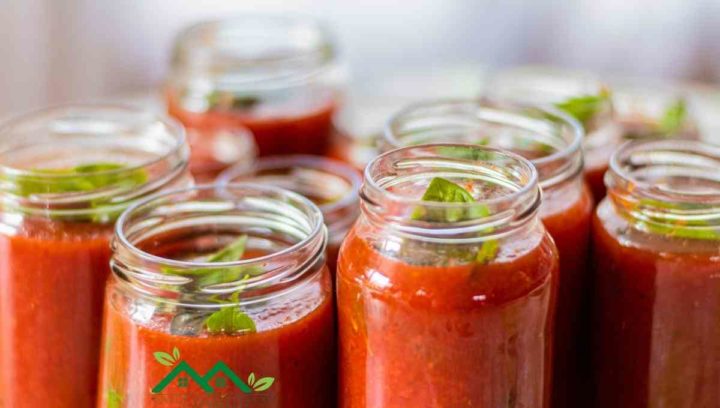Ketchup vs Tomato Sauce

Ketchup vs. Tomato Sauce: Are They Interchangeable?
From the big picture view, ketchup and tomato sauce more or less have the same core concept. So, what’s the difference?
In this article, we go over brief but conclusive ketchup vs. tomato sauce comparison. So, here we go!
Ketchup vs. Tomato Sauce: Overview
Let’s start by saying that not all condiments can be sauces. It’s all about how much of the product is used and how crucial it is to pull off the meal.
Ketchup
Ketchup is more of a table condiment than a sauce in the traditional sense, but that doesn’t take from its worldwide acceptance!
Although it’s a very westernized product, it’s derived from the Chinese kê-tsiap, a spicy sauce of fermented fish entrails and soybeans.
The ketchup we know today is a blend of tomatoes, vinegar, spices, corn derivatives, and a whole lot of sugar.
You can always spice up your sauce with Fresno Peppers or other replacements.
Tomato Sauce
Tomato sauce is a broad term describing any boiled puree tomatoes and some basic spices like salt and pepper.
By changing a bit in the herbal blend, you can get any range of customization from marinara to pizza sauce.
All in all, it’s a basic kitchen staple across different cuisines, thanks to its versatile applications.

Which Sauce Should You Use?
When you’re choosing between the old-fashioned tomato sauce and a bottle of ketchup, it all comes down to what you’re preparing.
Three main factors can help you decide which is a better fit for your meal. Let’s take a look at how the two tomato products compare in a head-to-head comparison:
You May Also Be Interested In
- What Is a Good Curing Salt Substitute
- What Is a Good Substitute for Creme de Cassis
- Is Blue Cheese Easy To Substitute
- Caramel Syrup vs Sauce
- Diced Tomato Alternatives
Ketchup Flow and Texture vs Tomato Sauce
Ketchup is one of the most common non-newtonian fluids ever. That’s why it takes a bit of shear to get the flow going.
Some brands even use corn syrup to thicken the mix. This texture and flow character is really good for dipping.
However, trying to dilute ketchup is a risky business since you’ll have to blend and sieve before you get to a homogeneous consistency.
On the other hand, tomato sauce offers a bit of a wiggle room. It’s all about how much water you’ll add to the blend.
Flavor Intensity is Strong For Tomato Sauce
Although ketchup is more processed, it still falls short when compared to the tomato sauce’s rich flavor profile.
If you want to substitute one with the other, you’ll see the stark difference in the swapping ratio.
You might need to use two full cups of ketchup to replace three-quarters of tomato sauce diluted in a cup of water.
This isn’t only the case with ketchup. Other tomato sauce alternatives are generally less intense, too.
For instance, an entire can of tomato soup hardly compares to a cup of concentrated tomato sauce.
Convenience
Ketchup is, hands down, the more convenient option. It’s bottled, has a long shelf-life, and is ready to go at any time.
That’s, of course, once you get over the non-Newtonian flow!
Keep in mind that even canned tomato sauce needs to be heated before use unless it’s for a dip.
So, ask yourself if the ketchup vs. tomato sauce difference in authenticity and flavor is crucial to the dish you’re making.

Why Is Ketchup Red
The Color of Ketchup is red because the base ingredient tomatoes are naturally red and are concentrated with the molecule called lycopene which imparts the bright red color to ketchup. If you are making ketchup up at home it is suggested that you do not use metal equipment because it can react with the acidic nature of the tomatoes that therefore losing some of the intense red colors to a natural iron oxidized color which is browner.
How Do You Thicken Homemade Ketchup
Pectin, is vital a ingredient in thickening ketchup. The ketchup will turn watery if all of the pectin is degraded or broken up.
Low-quality tomatoes or tomatoes that have already begun to rot will result in much more watery ketchup.
This may be remedied by reintroducing thickeners such as starch (from maize, for example) or gums like guar gum or xanthan gum.
